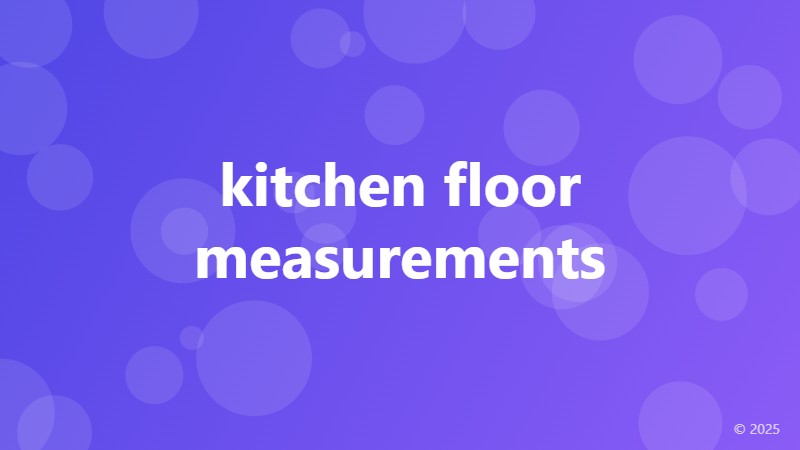kitchen floor measurements

Understanding Kitchen Floor Measurements: A Comprehensive Guide
Kitchen floor measurements are a crucial aspect of designing and renovating a kitchen. Whether you're building a new kitchen from scratch or simply upgrading your existing one, accurate measurements are essential to ensure a perfect fit for your flooring, cabinets, and appliances. In this article, we'll delve into the world of kitchen floor measurements, exploring the key considerations, measurement techniques, and tools you'll need to get it right.
Why Accurate Kitchen Floor Measurements Matter
Inaccurate kitchen floor measurements can lead to a multitude of problems, from ill-fitting flooring and cabinets to costly rework and renovations. Here are just a few reasons why getting your kitchen floor measurements spot on is crucial:
- Proper fit: Accurate measurements ensure a snug fit for your flooring, cabinets, and appliances, eliminating gaps and unevenness.
- Cost savings: Inaccurate measurements can result in costly rework, material waste, and even structural damage.
- Enhanced functionality: Well-designed kitchen floor measurements improve workflow, traffic flow, and overall functionality.
Key Considerations for Kitchen Floor Measurements
Before you begin measuring your kitchen floor, it's essential to consider the following factors:
- Room shape and size: Take note of any obstructions, such as pillars, alcoves, or irregularly shaped walls.
- Flooring type: Different flooring materials, such as hardwood, tile, or laminate, have unique measurement requirements.
- Cabinetry and appliances: Measure the dimensions of your cabinets, appliances, and fixtures to ensure a seamless fit.
Measurement Techniques and Tools
Now that you're aware of the importance of accurate kitchen floor measurements, let's explore the measurement techniques and tools you'll need:
- Tape measure: A high-quality tape measure is essential for taking precise linear measurements.
- Laser level: A laser level helps ensure accurate vertical and horizontal measurements.
- Graph paper: Plot your measurements on graph paper to visualize your kitchen floor layout.
- Online measurement tools: Utilize online tools, such as kitchen design software or measurement calculators, to streamline the process.
Measuring Your Kitchen Floor: A Step-by-Step Guide
Follow these simple steps to measure your kitchen floor accurately:
- Record the length, width, and shape of your kitchen floor.
- Measure the location and dimensions of any obstructions, such as pillars or alcoves.
- Take note of the location and dimensions of cabinets, appliances, and fixtures.
- Record the measurements of any doorways, windows, and electrical outlets.
- Double-check your measurements to ensure accuracy.
Conclusion
Accurate kitchen floor measurements are the foundation of a successful kitchen design or renovation. By understanding the importance of precise measurements, considering key factors, and utilizing the right techniques and tools, you'll be well on your way to creating a kitchen that's both functional and aesthetically pleasing. Remember to take your time, double-check your measurements, and don't hesitate to seek professional help if needed.